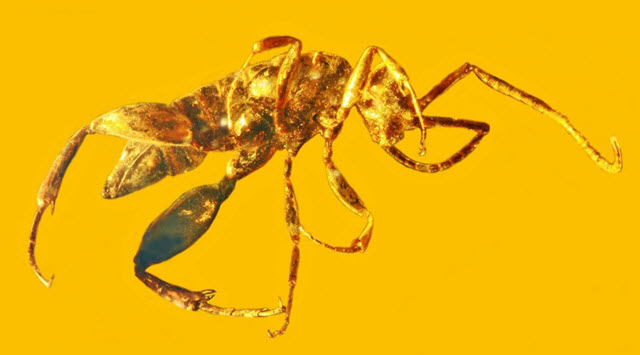Ancient Wingless Wasp Preserved in 100 Million Year Old Amber
Posted on October 13, 2016

Scientists discovered an ancient wingless wasp preserved in 100 million year old amber. The researchers created a new family for the unique wasp which belongs to no other family ever identified on Earth. The scientists say the wasp "seems to borrow parts of its anatomy from a range of other insects." It has grasshopper-like hind legs, ant-like antenna, a cockroach-like abdomen and a wasp-like face.
The wingless wasp lived at the base of trees. The family for the wasp has been named Aptenoperissidae. The insect, Aptenoperissus burmanicus, is now the family's only known specimen. The fossil was found in the Hukawng Valley in Myanmar.
George Poinar, Jr., a professor emeritus in the College of Science at Oregon State University, co-author on the study and amber insect expert, says in a statement, "When I first looked at this insect I had no idea what it was. You could see it's tough and robust, and could give a painful sting. We ultimately had to create a new family for it, because it just didn't fit anywhere else. And when it died out, this created an evolutionary dead end for that family."
A research paper on the wasp was published here in the journal Cretaceous Research.
Image: George Poinar, Jr., courtesy of Oregon State University
